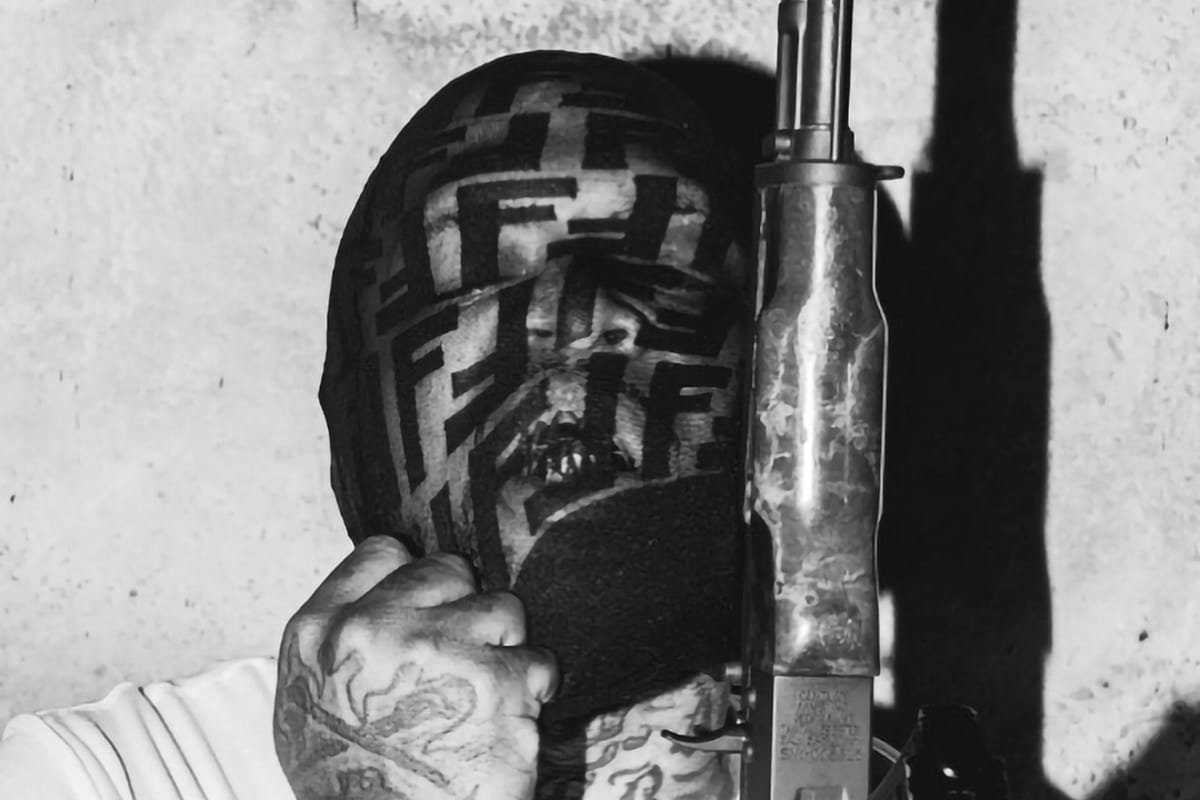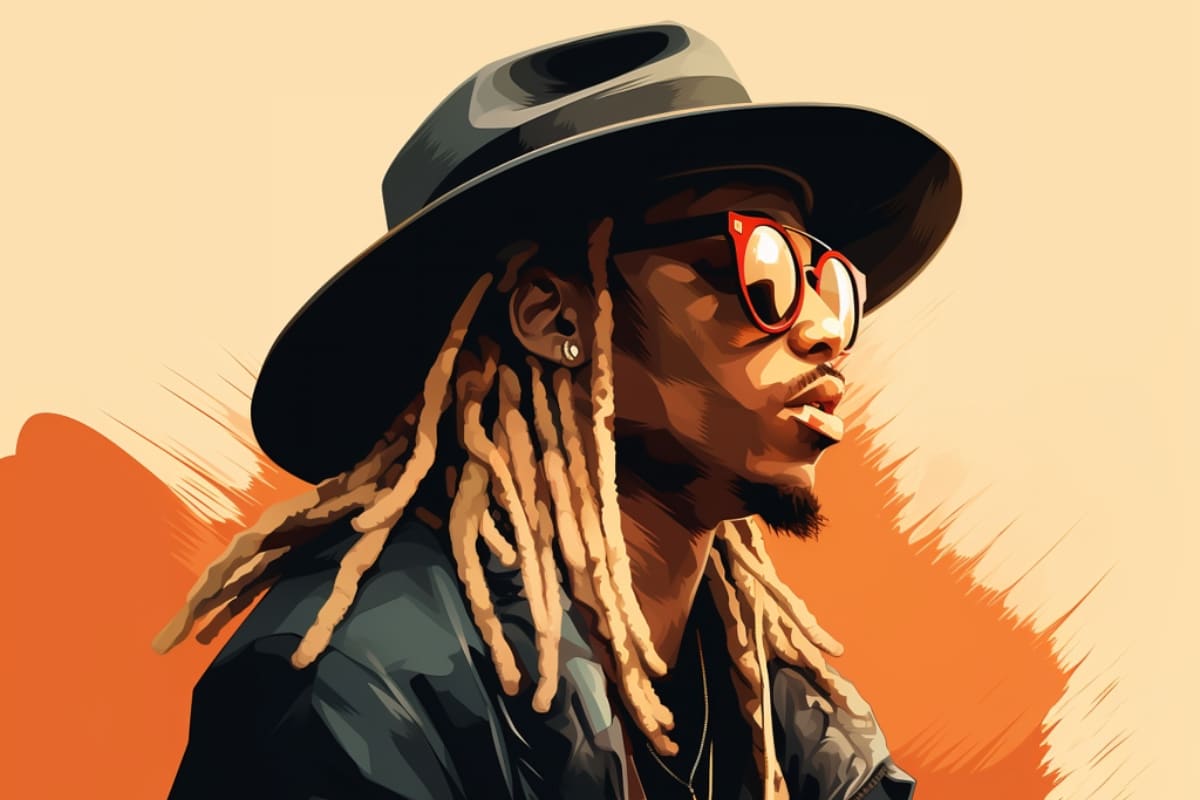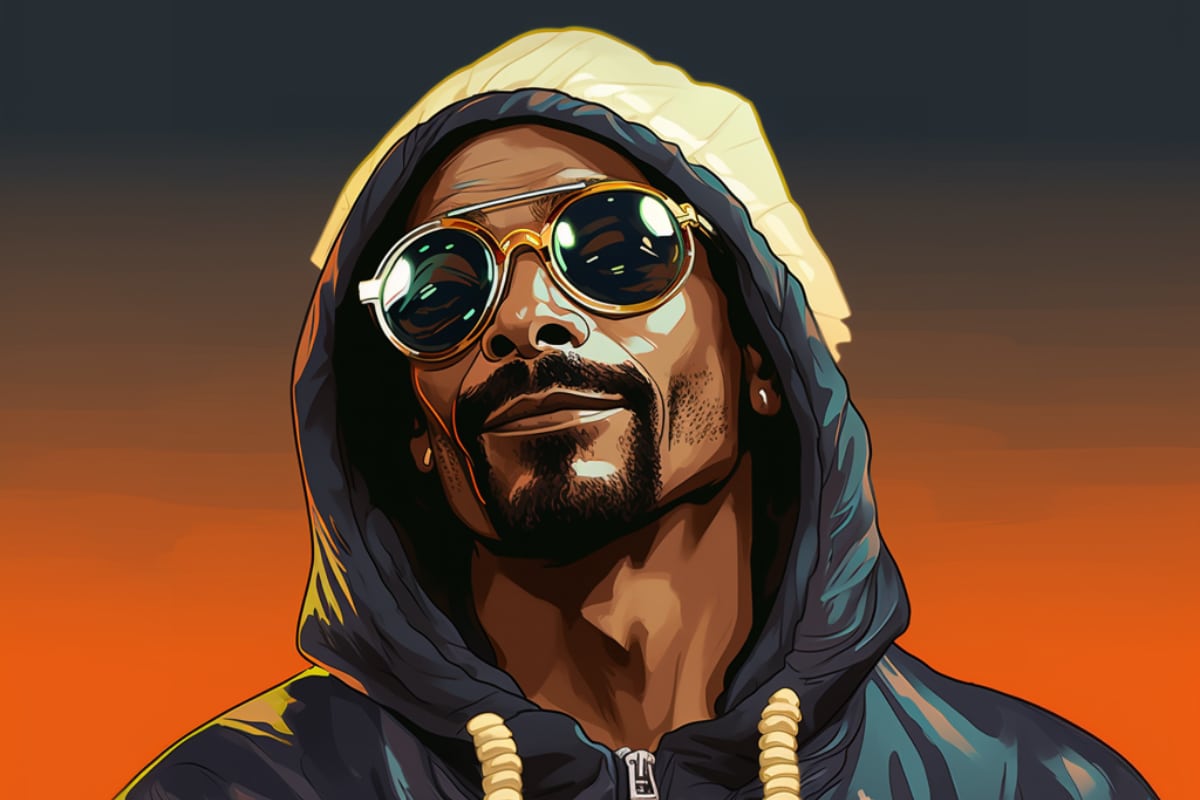Hip-hop has continuously evolved and reshaped the cultural landscape, with multiple golden eras. Each of those has contributed its unique flavor to the rich and colorful history. Here we are defining these moments as we embark on a journey through time, examining the best 5-year stretches in hip-hop history. From the emergence of groundbreaking artists to the release of albums that changed the course of music, each period reflects a specific chapter in the ever-evolving story of hip-hop.
This retrospective not only celebrates the genre’s triumphs but also delves into the artistic and cultural shifts that have defined its journey. Join us as we rank these historical epochs, appreciating the diversity, creativity, and revolutionary spirit that hip-hop has continuously offered to the world of music.
8. 2003 – 2007
Notable releases: The College Dropout, Speakerboxxx/The Love Below, Get Rich or Die Tryin’
The years from 2003 to 2007 heralded a pivotal period for hip hop, serving as a bridge between the genre’s raw, innovative past and its increasingly experimental and commercially successful future. As hip hop solidified its cultural dominance, this five-year stretch saw the emergence of new voices and the maturation of already established ones, all of whom would significantly shape the landscape of the music. A wave of hungry young artists surged onto the scene, determined to make their mark. Kanye West’s arrival with “The College Dropout” in 2004 was momentous, blending soulful samples with deeply introspective lyricism and creating a blueprint for others to follow. Lil Wayne’s prolific run, including the release of “Tha Carter II” and “Tha Carter III,” demonstrated a breathtaking lyrical dexterity that cemented his status as one of the best rappers alive. At the same time, 50 Cent’s “Get Rich or Die Tryin'” and its subsequent releases turned the gritty tales of the streets into commercial gold. The era also saw hip hop’s experimental side flourish. OutKast’s “Speakerboxxx/The Love Below” in 2003 pushed boundaries with its genre-bending sound, and their success signaled to the mainstream that hip hop was capable of an immense range of expression. Meanwhile, Jay-Z’s faux retirement with “The Black Album” in 2003 and triumphant return with “Kingdom Come” in 2006 served as powerful bookends to an era of rapid change and growth. With a plethora of seminal albums and the introduction of artists who would dominate the genre for years to come, the 2003-2007 stretch marked a remarkable period of creativity and evolution in hip hop.
7. 2008 – 2012
Notable releases: 808s & Heartbreak, Tha Carter III, So Far Gone
In the hip hop chronicles, the era from 2008 to 2012 is undeniably a fascinating one, serving as a backdrop for seismic shifts in sound, culture, and the industry at large. This period witnessed an intermingling of the old guard and the new school, resulting in some of the most enduring and influential works in the genre’s history.
At one end of the spectrum, you had artists like Kanye West pushing the envelope with 2008’s game-changing “808s & Heartbreak” and the maximalist masterpiece “My Beautiful Dark Twisted Fantasy” in 2010. These records not only highlighted West’s genius for production and his uncanny knack for cultural commentary but also set new standards for what hip hop could be—sonically adventurous, deeply personal, and culturally relevant.
Simultaneously, the likes of Lil Wayne and Jay-Z were holding court with an array of hits. Wayne’s “Tha Carter III” in 2008 marked the rapper’s zenith, while Jay-Z’s “The Blueprint 3” reminded everyone of his timeless talent. The emergence of Drake with his groundbreaking mixtape “So Far Gone” in 2009 and subsequent albums like “Take Care” signaled a new wave of hip hop, one that was introspective, melodic, and emotionally raw.
During this era, hip hop also experienced an alternative revolution with the rise of acts like Kid Cudi, Lupe Fiasco, and the entire Odd Future collective, whose unconventional sounds and styles defied traditional genre norms. Meanwhile, Rick Ross’ lush soundscapes in “Teflon Don” and Kendrick Lamar’s Compton narratives in “good kid, m.A.A.d city” reaffirmed the genre’s roots in storytelling and street culture.
In retrospect, the five-year stretch from 2008 to 2012 was a time of remarkable dynamism and diversity in hip hop, bridging the past, the present, and the future of the genre.
6. 2013 – 2017
Notable releases: Yeezus, DAMN., Coloring Book.
The half-decade of 2013 to 2017 was a golden era for hip hop, brimming with profound innovation, genre-blurring experimentation, and an unprecedented influx of diverse talent. It was during these years that the hip hop genre made significant leaps, not only within its confines but also in its relation to mainstream culture, pushing the boundaries and redefining the status quo.
The period began with the release of Kanye West’s “Yeezus” in 2013, an abrasive and industrial hip hop project that reflected a drastic departure from his previous works. Meanwhile, Kendrick Lamar’s magnum opus, “To Pimp a Butterfly” in 2015, and “DAMN.” in 2017 demonstrated a mastery of storytelling, social commentary, and concept album execution. These albums underscored Lamar’s position as one of the most important voices in modern hip hop and further propelled the genre towards uncharted artistic heights.
Newcomers such as Chance the Rapper, with his joyful “Acid Rap” mixtape in 2013 and the spiritually-rich “Coloring Book” in 2016, and Travis Scott, with his psychedelic trap music on “Rodeo” in 2015 and “Astroworld” in 2018, offered fresh perspectives and sounds. They illustrated the genre’s ability to evolve and accommodate a broad spectrum of styles and themes.
Moreover, during these years, hip hop became even more intertwined with popular culture. Drake’s “If You’re Reading This It’s Too Late” in 2015 and “Views” in 2016, for instance, saw the Toronto artist blending R&B, dancehall, and hip hop elements to create chart-topping hits that resonated with a global audience.
The stretch from 2013 to 2017 was indeed a transformative phase for hip hop, cementing its place not just as a vital musical genre, but as an integral part of global popular culture.
5. 1983 – 1987
Notable releases: The Message, Licensed to Ill, Criminal Minded
The years from 1983 to 1987 can be seen as the adolescence of hip-hop, a period of remarkable growth and maturation. It was an era that saw the genre break from its infancy to lay the foundations for the cultural behemoth it would become.
The early 80s marked hip-hop’s emergence from the urban spaces of New York to national recognition. Grandmaster Flash and the Furious Five released “The Message” in 1982, leading to the genre’s rise in the following years. The game-changer, however, was Run-DMC. Their eponymous debut in 1984 and follow-up “King of Rock” in 1985 marked a departure from the disco-influenced sounds of early hip-hop, embracing rock influences and boasting a harder, street-oriented aesthetic.
Beastie Boys’ “Licensed to Ill,” helmed by producer Rick Rubin, blurred the lines between hip-hop and rock in 1986, introducing the genre to a wider, cross-cultural audience. This period also saw the birth of ‘conscious hip-hop,’ with artists like KRS-One and his group Boogie Down Productions releasing “Criminal Minded” in 1987, tackling social issues with lyrical depth.
At the tail-end of this period, in 1987, Eric B. & Rakim’s “Paid in Full” debuted, forever changing the genre with Rakim’s complex lyrical stylings and Eric B.’s layered, sample-heavy production. Their innovation paved the way for the intricate lyricism and production techniques that would dominate in the years to come.
In essence, the period from 1983 to 1987 was when hip-hop came of age. It transitioned from being a subculture in the streets of New York to a driving force in music, destined to become a significant voice for generations to come.
4. 2018 – 2022
Notable releases: ASTROWORLD, Planet Her, Call Me If You Get Lost
The period between 2018 and 2022 brought an expansion of the genre’s frontiers, cultivating a fertile ground for experimentation, and elevating hip-hop as the dominant cultural force worldwide. It was a time characterized by its genre-blurring creativity, breakthrough artists, and the tragic loss of some of its bright stars.
In terms of commercial success, hip-hop reigned supreme. Streaming services continued to shape the music landscape, with rap artists often topping the charts. Drake, Post Malone, and Travis Scott emerged as veritable juggernauts during this period, releasing chart-topping albums that broke streaming records, while the likes of Kendrick Lamar and J. Cole continued to solidify their status as some of the genre’s most respected artists.
The meteoric rise of artists like Cardi B, Megan Thee Stallion, and Doja Cat during this period also signaled an exciting shift in the traditionally male-dominated genre, with women finally getting their due recognition in the rap landscape.
The trap sound that began in the South became globally pervasive, shaping the sonic landscape of hip-hop, and artists like Migos, Lil Baby, and DaBaby were some of the style’s biggest proponents. Meanwhile, artists like Tyler, The Creator and Brockhampton pushed the boundaries of what hip-hop could be, blending elements from different genres and delivering highly innovative projects.
It was also a period marked by loss, with the untimely deaths of influential artists like Mac Miller, Nipsey Hussle, Pop Smoke, and Juice Wrld, all of whom left an indelible mark on the genre. Despite these tragic losses, their influence can be felt in the music of the artists who followed, ensuring that their legacy lives on.
In all, the years from 2018 to 2022 were a period of intense growth and evolution for hip-hop, witnessing the genre’s ever-increasing influence on global music and culture.
3. 1998 – 2002
Notable releases: The Blueprint, Stankonia, Slim Shady LP
The era from 1998 to 2002 was a profound period in hip hop, marked by an intense spirit of creativity, emergence of new sub-genres, and a seismic shift in the genre’s overall cultural impact. During these years, hip hop was not just about music; it was also about shaping the cultural narrative and influencing every facet of popular culture from fashion to movies.
On the East Coast, Jay-Z released ‘The Blueprint’, a defining record not just for his career, but for hip hop at large, while DMX’s raw energy and emotional vulnerability introduced a unique dynamic to the rap game. At the same time, the lyrical prowess of Nas and the late Big Pun kept the tradition of hardcore East Coast hip hop alive and thriving.
Meanwhile, the West Coast, led by the indomitable Dr. Dre, Snoop Dogg, and Xzibit, was reinventing G-Funk and providing a solid platform for the emergence of gangsta rap. Down south, OutKast’s ‘Stankonia’ blended funk, rave, rock and psychedelia with hip hop, producing a new, distinct sound that would influence a generation of artists.
In addition, the rise of the independent rap scene, with labels like Rawkus Records and Stones Throw, and the emergence of sub-genres like horrorcore, brought about a diversification in the genre’s sound and a platform for experimental artists.
These were also the years when hip hop’s global influence was becoming undeniably evident, with the genre infiltrating the mainstream and shaping everything from fashion trends to movie soundtracks. This period served as a turning point, marking hip hop’s transformation from a genre to a global cultural movement.
2. 1988 – 1992
Notable releases: Straight Outta Compton, It Takes a Nation of Millions to Hold Us Back.
The late 80s and early 90s, specifically 1988 to 1992, was an unprecedented era in hip hop, characterized by radical innovation, boundary-pushing lyricism, and a bold political consciousness. This period witnessed the rise of numerous seminal groups and solo acts that would go on to shape the genre’s trajectory for decades to come.
Public Enemy and N.W.A. were at the forefront of a politically charged brand of hip hop that confronted systemic racism, police brutality, and socio-economic inequality. Their uncompromising and provocative narratives served as the soundtrack to an era of intense social and political turmoil. N.W.A.’s ‘Straight Outta Compton’ and Public Enemy’s ‘It Takes a Nation of Millions to Hold Us Back’ are widely acknowledged as some of the most influential albums in hip hop history.
At the same time, this era heralded the rise of the ‘Golden Age’ of East Coast hip hop. Pioneering artists like KRS-One, Big Daddy Kane, and Rakim, brought an unmatched level of lyricism and flow to the genre. The advent of the Native Tongues collective, with groups like A Tribe Called Quest and De La Soul, ushered in a refreshing, eclectic approach to hip hop, combining socially conscious lyrics with a fusion of jazz, funk, and soul.
In addition, the South started to make its mark with the emergence of groups like the Geto Boys from Houston, who brought a unique Southern perspective to hip hop. From the gritty street tales of Scarface to the horror-themed narratives of Bushwick Bill, the Geto Boys added a distinct flavor to the hip hop landscape.
Overall, these years were a potent melting pot of creativity and activism, leaving an indelible impact on the world of hip hop and beyond.
1. 1993 – 1997
Notable releases: Illmatic, Enter the Wu-Tang, ATLiens
Few periods in hip hop have proved as transformative and influential as 1993 to 1997. The mid-90s was a time of prolific artistic expression and fierce competition that broadened the genre’s reach and solidified its status in the music mainstream.
On the West Coast, Death Row Records, under the helm of Dr. Dre and Suge Knight, dominated the charts with the indomitable presence of artists like Snoop Dogg and Tupac Shakur. G-funk, with its mellifluous synthesizers and laid-back grooves, became the defining sound of this era, offering a sun-drenched counterpoint to the grittier rhythms of East Coast hip hop.
Meanwhile, in New York, a renaissance was underway. Spearheaded by artists like Nas, whose debut ‘Illmatic’ set a new standard for lyrical craftsmanship, and the Wu-Tang Clan, whose ‘Enter the Wu-Tang (36 Chambers)’ fused gritty urban narratives with martial arts mythology, the East Coast scene was undergoing a creative explosion. The Notorious B.I.G., with his effortless flow and vivid storytelling, also emerged as one of the greatest rappers of all time during this period.
The South and Midwest also began to assert their unique identities. OutKast’s eclectic style and thoughtful lyrics put Atlanta on the map, while Bone Thugs-n-Harmony’s melodic flow and rapid-fire delivery added a unique flavor to the genre.
Beyond individual artists, this period marked an era of groundbreaking collaborations and intense rivalries, notably the infamous East Coast vs. West Coast feud. The cultural impact of this era reverberates through the hip hop of today, testifying to its lasting influence.








